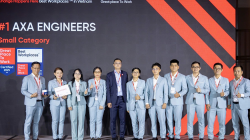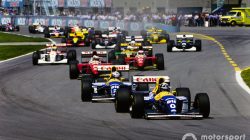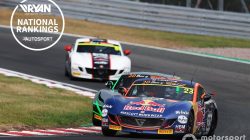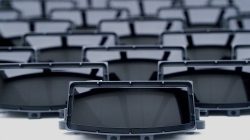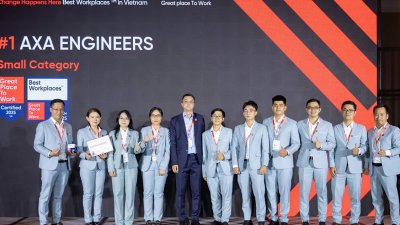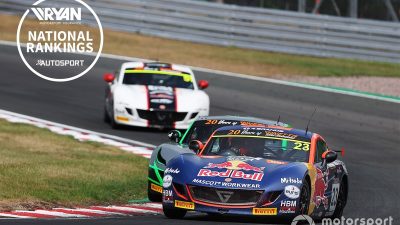The present regulations in Formula 1 have progressively resulted in the most tightly packed starting lineup ever recorded. This implies that a small enhancement could be the deciding factor between accumulating championship points and failing to progress past the first qualifying round. Coupled with complex ground-effect vehicles and constraints on budgeting as well as wind tunnel tests, this has narrowed down the room for mistakes during the refinement phase significantly. Every modification now demands meticulous planning and seamless coordination across all teams involved.
This also applies to Racing Bulls, which has found itself on either side of that narrow midfield during the last eighteen months. Apart from using a power unit, gearbox, and suspension components from its larger sibling.
Red Bull
Racing Bulls designs and constructs all their components internally, employing more than 500 individuals at their primary headquarters in Faenza and an additional 200 staff members at their facility in Milton Keynes. This is where the process begins, taking an aerodynamic concept through five stages until it runs on the racetrack.
Step 1: Aerodynamics
Each enhancement in aerodynamic performance begins with a concept developed by the aerodynamic experts associated primarily with the team’s recently established base in Milton Keynes, United Kingdom. However, their flexible working policy permits some personnel to operate out of Faenza too. A major advantage of relocating to the premises of Red Bull Technologies lies in proximity to Red Bull’s wind tunnel facility, thus facilitating the concentration of much of the aero workforce there. Additionally, this site hosts a smaller group tasked with crafting and manufacturing 60% scaled-down prototypes for testing these new aerodynamic components within the wind tunnel.
With the introduction of the budget cap under Formula 1 regulations, each team must exercise greater discipline when developing new concepts, due to financial constraints as well as limits on wind tunnel usage and computational fluid dynamics analysis. However, teams have managed to offset these limitations by enhancing the effectiveness and precision of their methodologies.
The initial phase involves Computational Fluid Dynamics assessment,” explains Matteo Piraccini, the operations director at Racing Bull, during our facility tour in Faenza. Based in Faenza, Piraccini oversees the production processes ensuring optimal efficiency for manufacturing top-tier Formula 1 vehicles swiftly. “Out of ten aerodynamic designs, typically two or three progress to the wind tunnel stage. We gather comprehensive data before selecting the superior option.”
That isn’t solely the responsibility of the aerodynamicists. They collaborate closely with VPG—the vehicle performance group—which runs simulations to determine whether a proposed aerodynamic modification will result in an actual improvement on the track. Factors such as car balance, circuit conditions including roughness, and varying driving demands must also be considered. Remember, aero figures alone do not tell the whole story.

Racing Bulls VCARB 02, front spoiler
Photo by: Roberto Chinchero
These factors have been particularly significant for the 2022 class of ground-effect vehicles, as numerous teams struggled to convert simulation data into tangible performance gains on track. This has affected Racing Bulls, which experienced a setback during their 2024 Barcelona update, along with larger outfits including
Ferrari
And Aston Martin has also faced difficulties.
Based on the scale of the upgrade package, smaller adjustments may receive approval from performance managers, whereas larger overhauls must be authorized at the level of the technical director. This authorization process is referred to as the ‘aero release,’ which serves as formal internal communication authorizing further action along the development chain—specifically, instructing the design department to proceed. The choice hinges not just on enhancing component performance but also on timing since particular tracks demand specialized enhancements. For instance, many teams developed custom high-downforce wings specifically for the Monaco Grand Prix, contrasting with the scenario in Baku where low-downforce components were prioritized instead. Balancing these requirements ensures that appropriate modifications reach production stages precisely when needed for each respective track.
Step 2: Design
The aerodynamic designs originate from Racing Bulls’ UK-based aerodynamics division before they’re forwarded to their design facility located in Faenza. Here, the designers receive these conceptual forms and transform them into tangible components. This process involves more than simply ensuring precise contours; it also requires incorporating adequate structural strength, achieved through the use of computer-aided design (CAD) tools and specialized engineering software.
A prime illustration occurred during the racing event in Barcelona, when teams were compelled to reinforce their front wings due to enhanced load testing requirements imposed by the Fédération Internationale de l’Automobile (FIA). These regulations aimed at curbing excessive flexibility in front wings. As anticipated, every one of the ten competing teams was required to modify their wings—regardless of whether or not they typically utilized such flex for competitive advantage.
Piraccini clarifies that the design specifications include an aerodynamic shape requirement along with various others related to reliability and FIA standards. He notes that designing bodywork is relatively simple since it only needs to conform to lawful shapes. However, for components like the front wing, rear wing, and floor—which serve structural purposes—compliance must be achieved not just dimensionally but structurally too, meeting all of the FIA’s testing criteria.
The technical guidelines include a process where loads are applied at several points. For every stage of this loading, the deflection of the flap or wing must remain below specific thresholds. This falls under the design specifications, which have been updated for Barcelona.
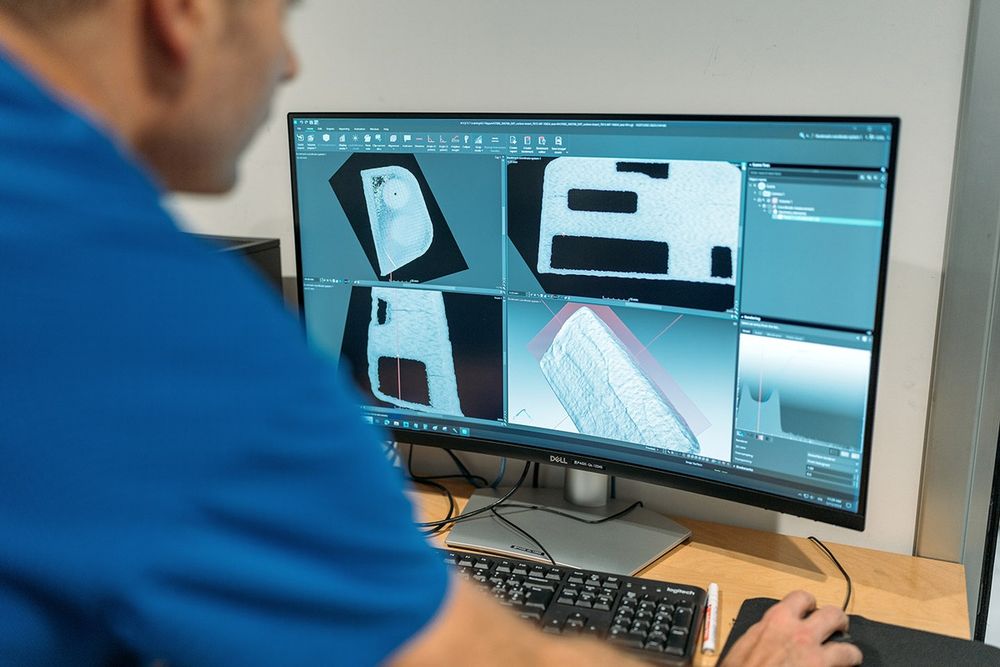
Photo courtesy of: Red Bull Content Pool
Additional limitations involve providing ample room for intricate cooling mechanisms, wire harnesses, and openings for more than 200 sensors. Designers are not only conceptualizing the carbon fiber components but also developing all the tools necessary for their production. Since a revised floor layout necessitates a new molding process, efforts are being made to align these procedures as efficiently as feasible.
All our designers collaborate in real-time using the same data, making virtual mock-ups of the vehicle an essential tool for the design studio,” Piraccini explains further. “Should one team focus on the chassis while another works on the bodywork without simultaneously reviewing the shared details, discrepancies may arise between these components. This lack of synchronization could result in reduced effectiveness throughout our entire design workflow.
Step 3: Production
It should be emphasized that this process is not linear. The production team doesn’t sit idle awaiting the complete design specifications. To enhance “time to race,” a crucial metric in vehicle development indicating the duration from an aerodynamic idea’s conception to its appearance on the track-ready car, the production unit gets involved even before the entire design specification is finalized.
“A front wing consists of various components, and we aren’t holding off until every single piece arrives before initiating the production process,” states Piraccini. “As soon as the primary section of the front wing is ready, the production team begins manufacturing. Acting like an orchestral director, the product manager oversees communication and scheduling to minimize the lead-up to the racing event.”
Creating carbon fiber composites involves a precise procedure. The work moves to a “clean room,” where carbon fiber sheets are layered with resin to form what’s known as a wet ply. Clean rooms maintain strict control over their environments to prevent particle contamination of the ply, ensuring the final product remains high-quality. Particles trapped among the carbon fiber layers might lead to fissures when these components experience stress during use.
Once the component has been treated with wet plywood, it moves through a curing process inside an autoclave—a substantial oven capable of being adjusted to specific temperatures ranging from typically 100 to 250 degrees Celsius—as well as pressures between three to seven bars. This is when the carbon fiber composite gains its desirable strength-to-weight ratio. After exiting the autoclave, the piece undergoes initial inspection before proceeding to a trimming section designed for cleaning and polishing purposes, thereby eliminating any remaining debris.
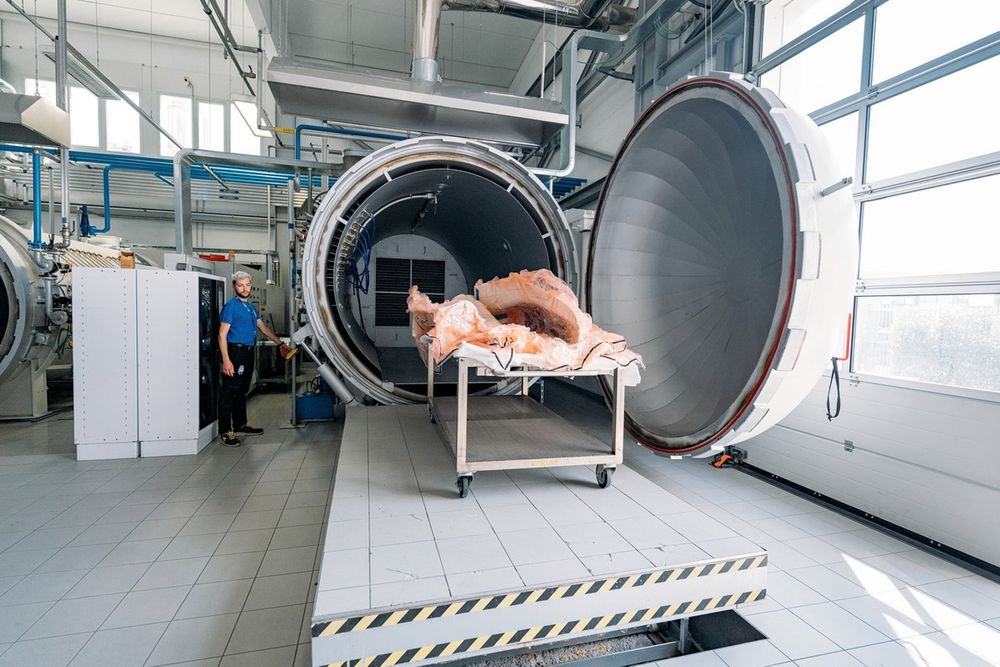
One of the high-pressure ovens utilized for curing carbon fiber composites is an autoclave, which happens to be quite large.
Photo courtesy of: Red Bull Content Pool
The exact quantity of additional components manufactured per upgrade varies depending on specific conditions, since nobody wishes to create excess items beyond what is needed—this consideration applies not only to costs but also to available materials. As Piraccini points out, “there isn’t a set figure.” For instance, Monaco necessitates wings with significant downforce and everyone understands the potential hazards this circuit poses regarding damages; therefore, according to our evaluations, we may opt to fabricate around four or five such wings. However, at times, prioritizing performance over safety leads us to settle for producing merely one or two wings when feasible.
For Barcelona’s front wings, though, this isn’t about adding an optional aerodynamic upgrade; instead, it’s required by the FIA. Given that we can’t afford any chances here, preparations began early to make sure we’ll have sufficient spares ready for Spain that meet the FIA’s updated requirements.
Step 4: Quality
The fourth significant stage involves the quality department, responsible for validating the newly manufactured components. In addition to conducting dimensional inspections to confirm compliance with the design specifications, this phase includes two methods for assessing a part’s durability. One method employs destructive verification procedures (DVP) designed to push parts to their limits until they fail. The alternative approach uses non-destructive testing (NDT) techniques applied individually to every component prior to installation into the vehicle. During this check, the crew ensures that their latest Barcelona front wing meets the rigidity standards set forth by the FIA through more stringent loading evaluations.
However, as Piraccini points out, this doesn’t follow a straightforward sequence since the quality department assists with the production process even beforehand. “These skills are necessary throughout the entire production phase, and our aim is to accelerate the timeline until we can compete,” he stated. “It’s essential to identify any issues prior to reaching the final step to avoid having to restart everything. Additionally, we perform checks during maintenance stages across different phases of the component’s lifecycle. For instance, a front wing undergoes inspection both when it is newly manufactured and later once it has accumulated specific mileage to confirm that track use hasn’t altered its rigidity.”
Step 5: Assembly

Image courtesy of: Red Bull Content Pool
The concluding stage involves assembling various components like the complete suspension system and the whole nose section along with the front wing. Following Piraccini around the facility, we observe them installing the team’s latest underfloor design for the Imola circuit, which includes connecting electrical harnesses. Naturally, photography isn’t permitted here either. After these parts are assembled, they’re transported to another work zone. Simultaneously, the painting department applies the vehicle graphics and sponsorship stickers onto every component.
Typically, cars are transported in pieces and then fully assembled at the track. However, during our investigation, the team was completely assembling the vehicles themselves.
Isack Hadjar
and
Liam Lawson
In the racing paddocks, there indeed exists what one might call a home advantage in Formula 1. Given that Faenza lies merely 20 minutes away from Imola, this allows the Racing Bulls team to delay their car releases slightly without rushing too much against their deadlines.
What changes have occurred in the process?
It has become evident that significant improvements can be made through highly coordinated efforts aimed at reducing both the duration and costs associated with developing new components, all while navigating Formula 1’s aerodynamic limitations. The emphasis here lies heavily on efficiency, coupled with robust communication strategies.
The same principle holds true whether you’re on the track or back at the factory. Every fraction of a second matters.




